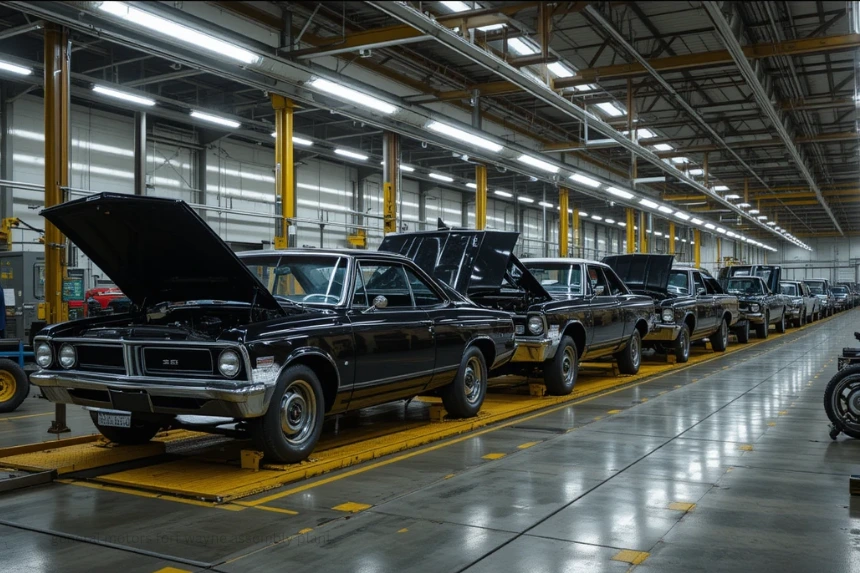The General Motors Fort Wayne Assembly Plant is a vital manufacturing facility within the automotive industry, playing a significant role in the production and assembly of vehicles for one of the world’s largest automakers. Located in Fort Wayne, Indiana, this plant has been a cornerstone of economic activity and industrial innovation in the region. This article provides a comprehensive overview of the plant’s history, operations, significance, and its impact on the local community and automotive market.
Introduction to the General Motors Fort Wayne Assembly Plant
The Fort Wayne Assembly Plant is one of General Motors’ (GM) most well-known manufacturing locations.Established in the mid-20th century, it has evolved over decades to meet the demands of the modern automotive industry. Today, the plant specializes in the assembly of trucks and commercial vehicles, which are integral to GM’s product lineup. Its strategic location and advanced manufacturing capabilities make it a key asset for GM and the broader automotive market.
History and Development of the Fort Wayne Assembly Plant
The origins of the General Motors Fort Wayne Assembly Plant date back to the post-World War II era, a period marked by rapid growth in American automobile manufacturing. Initially, it was constructed to facilitate the assembly of passenger cars, but over time, the facility expanded its scope to include trucks and commercial vehicles.
Throughout the decades, the plant has undergone numerous upgrades and modernization efforts. Major investments have focused on enhancing automation, introducing new robotics, and adopting innovative manufacturing techniques. These developments have enabled the plant to maintain high efficiency and meet the changing demands of consumers and regulatory standards.
Manufacturing Operations and Vehicle Production
Today, the General Motors Fort Wayne Assembly Plant primarily focuses on producing full-size pickup trucks, including the Silverado and Sierra models. These trucks are some of the best-selling vehicles in North America, emphasizing the plant’s importance in GM’s profit centers.
Advanced Manufacturing Technologies
The plant is equipped with state-of-the-art manufacturing technologies, including robotic assembly lines, precision welding stations, and quality control systems. Automation plays a crucial role in ensuring consistent quality and increasing production speed, which is essential given the high demand for GM trucks.
Workforce and Skills
The Fort Wayne Plant employs thousands of people, including skilled artisans, engineers, and production line workers. GM invests heavily in workforce training programs to keep employees updated on the latest manufacturing techniques and safety standards. The facility also collaborates with local educational institutions to develop training pipelines for future workers.
Economic and Community Impact
The General Motors Fort Wayne Assembly Plant significantly impacts the local economy and community. It provides hundreds of jobs directly at the facility and supports many ancillary industries, including parts suppliers, service providers, and logistics companies.
Economic Contributions
The presence of the plant boosts the regional economy through payroll, taxes, and local business patronage. GM’s dedication to maintaining manufacturing jobs and local economic stability is demonstrated by its investment in the Fort Wayne site.
Environmental and Sustainability Initiatives
GM has prioritized sustainability initiatives at the Fort Wayne plant, aiming to reduce its carbon footprint. These efforts include adopting energy-efficient manufacturing processes, implementing waste reduction programs, and exploring renewable energy sources to power operations. The plant’s push toward greener practices aligns with GM’s broader commitment to sustainability and innovation.
Challenges and Future Outlook
Like many manufacturing facilities, the General Motors Fort Wayne Assembly Plant faces challenges related to global supply chain disruptions, evolving vehicle regulations, and technological advancements. Nonetheless, GM’s continued investments show that it believes the factory is strategically significant.
Innovation and Future Goals
Looking ahead, the plant aims to incorporate electric vehicle (EV) manufacturing capabilities. GM’s larger push toward electric mobility suggests that future modifications and upgrades may include EV assembly lines, battery integration, and cleaner manufacturing practices. This transition aligns with GM’s vision for a sustainable, electrified future.
Community Collaboration and Growth
The plant continues to work closely with local government and community organizations to foster economic growth, workforce development, and environmental stewardship. Such collaborations are essential for ensuring that the plant remains a vital part of the region’s industrial landscape.
Conclusion
The General Motors Fort Wayne Assembly Plant stands as a testament to American manufacturing resilience, innovation, and community partnership. Its role in producing some of the most popular trucks in North America underscores its importance within GM’s global strategy. As the automotive industry shifts toward electrification and sustainability, the Fort Wayne plant is poised to adapt and lead the way in future vehicle manufacturing.
Investing in technology, workforce development, and sustainability initiatives, this facility will undoubtedly continue to contribute to the economic vitality of Fort Wayne and the broader automotive sector for years to come.



